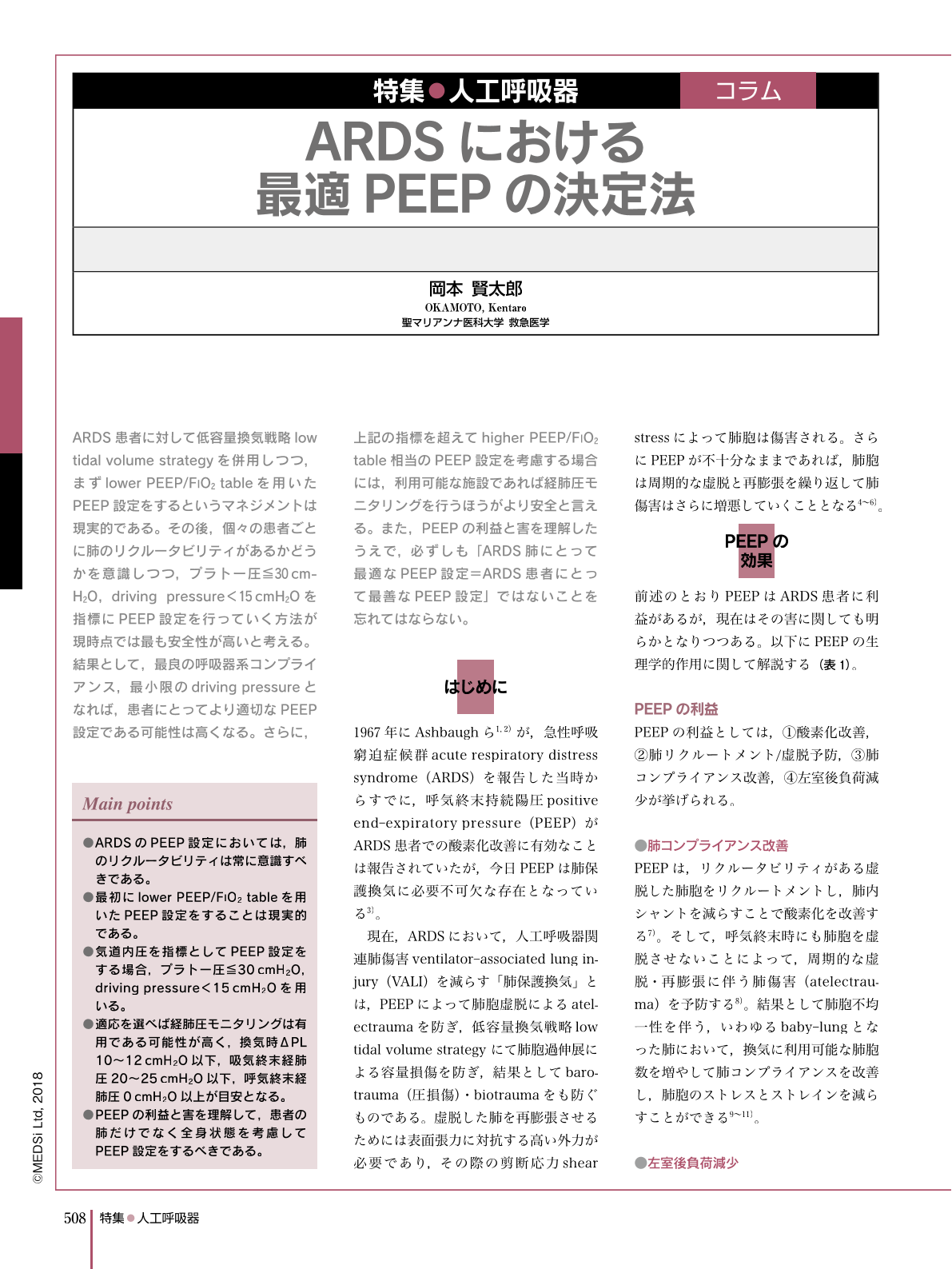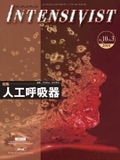Japanese
English
- 有料閲覧
- Abstract 文献概要
- 1ページ目 Look Inside
- 参考文献 Reference
ARDS患者に対して低容量換気戦略low tidal volume strategyを併用しつつ,まずlower PEEP/FIO2 tableを用いたPEEP設定をするというマネジメントは現実的である。その後,個々の患者ごとに肺のリクルータビリティがあるかどうかを意識しつつ,プラトー圧≦30cmH2O,driving pressure<15cmH2Oを指標にPEEP設定を行っていく方法が現時点では最も安全性が高いと考える。結果として,最良の呼吸器系コンプライアンス,最小限のdriving pressureとなれば,患者にとってより適切なPEEP設定である可能性は高くなる。さらに,上記の指標を超えてhigher PEEP/FIO2 table相当のPEEP設定を考慮する場合には,利用可能な施設であれば経肺圧モニタリングを行うほうがより安全と言える。また,PEEPの利益と害を理解したうえで,必ずしも「ARDS肺にとって最適なPEEP設定=ARDS患者にとって最善なPEEP設定」ではないことを忘れてはならない。
Main points
●ARDSのPEEP設定においては,肺のリクルータビリティは常に意識すべきである。
●最初にlower PEEP/FIO2 tableを用いたPEEP設定をすることは現実的である。
●気道内圧を指標としてPEEP設定をする場合,プラトー圧≦30cmH2O,driving pressure<15cmH2Oを用いる。
●適応を選べば経肺圧モニタリングは有用である可能性が高く,換気時ΔPL 10〜12cmH2O以下,吸気終末経肺圧20〜25cmH2O以下,呼気終末経肺圧0cmH2O以上が目安となる。
●PEEPの利益と害を理解して,患者の肺だけでなく全身状態を考慮してPEEP設定をするべきである。
A substantial number of studies have been performed to determine optimal settings for positive end-expiratory pressure (PEEP) in patients with acute respiratory distress syndrome (ARDS), but the best method to determine the optimal PEEP setting is still unknown. A realistic way to do this may be to determine the optimal PEEP setting using the lower PEEP/FIO2 table with concomitant use of the low tidal volume strategy in the ARDSnet protocol. Target goals include an inspiratory plateau pressure below 30cmH2O and a driving pressure below 15cmH2O, while an evaluation for alveolar recruitment is performed. When higher PEEP, as in the higher PEEP/FIO2 table, is needed, monitoring transpulmonary pressure should be considered if available. In addition, we should bear in mind both the benefits and harms of PEEP. The best PEEP setting for the lung in a patient with ARDS is not always best for the patient with ARDS.

Copyright © 2018, MEDICAL SCIENCES INTERNATIONAL, LTD. All rights reserved.


